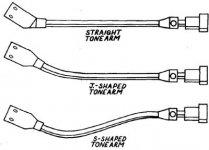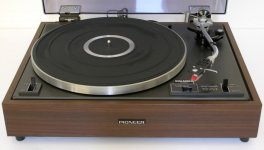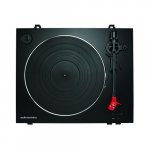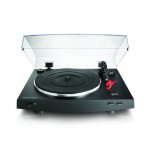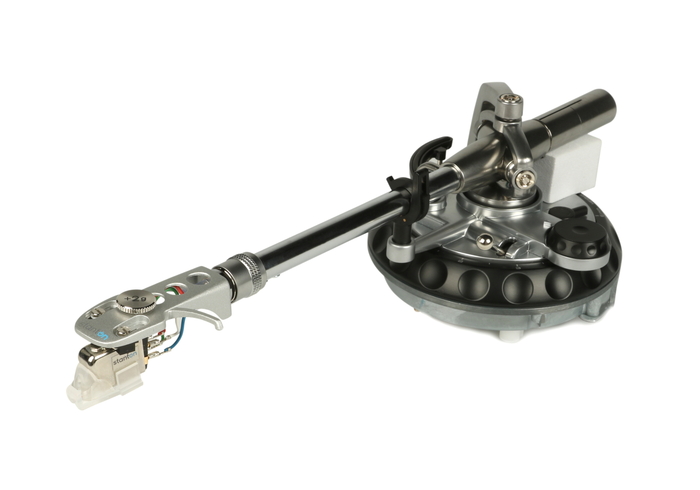The advantage of cranked tonearms is that they can accept universal headshells.
But at the cost of asymmetrical loading on the bearings.
There is also the convenience of swapping shells. No standard arrangement similar to SME exists for straight arms.
There is also the convenience of swapping shells. No standard arrangement similar
to SME exists for straight arms.
The non-detachable SME 3009 II sounded much better than the detachable version, though.
Last edited:
Since nigelb63 asks a 'newbie question', it's worth pointing out that the asymmetry of an S shaped arm can be offset by an additional weight at the rear of the arm.But at the cost of asymmetrical loading on the bearings.
The additional weight can be seen sticking out on the left hand side of the arm on this Pioneer PL-12D.
@ rayma: Do I remember correctly - was it the case that some users preferred to use the PL-12D with this additional weight removed?
Attachments
was it the case that some users preferred to use the PL-12D with this additional weight removed?
Probably so, adding a lot of mass isn't a good solution. At least Duals had a straight arm,
and a detachable cartridge carrier that didn't add much mass. Didn't care for the
"dynamic spring-balance" though. Breuer also used something similar, and both arms
sounded better using their counterweights to set the VTF instead of the springs.
Last edited:
Would be cartridge swappers on a strict budget may be interested in the
AT-LP3 turntable
with straight tonearm and removeable AT-HS3 headshell.
Looks ok for a cheap complete LP playing solution.
Wouldn't play any rare or valuable LPs on it, though.
Last edited:
Not any. At least the 1237A and 1239A changers had S-shaped arms (due to sexyness, I think 😀).At least Duals had a straight arm,...
This certainly holds true!...and a detachable cartridge carrier that didn't add much mass.
Best regards!
- Status
- Not open for further replies.
- Home
- Source & Line
- Analogue Source
- Tonearms
